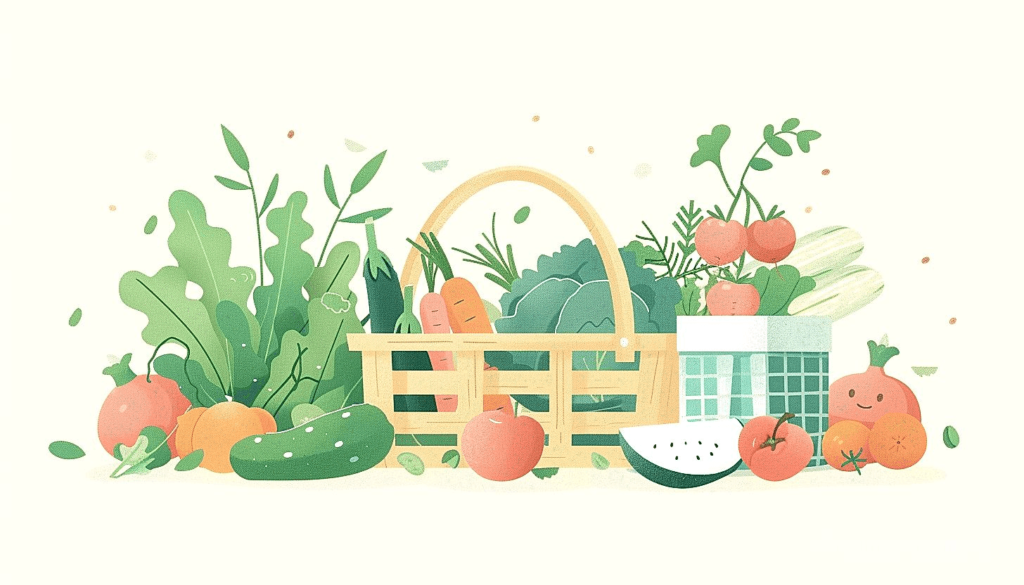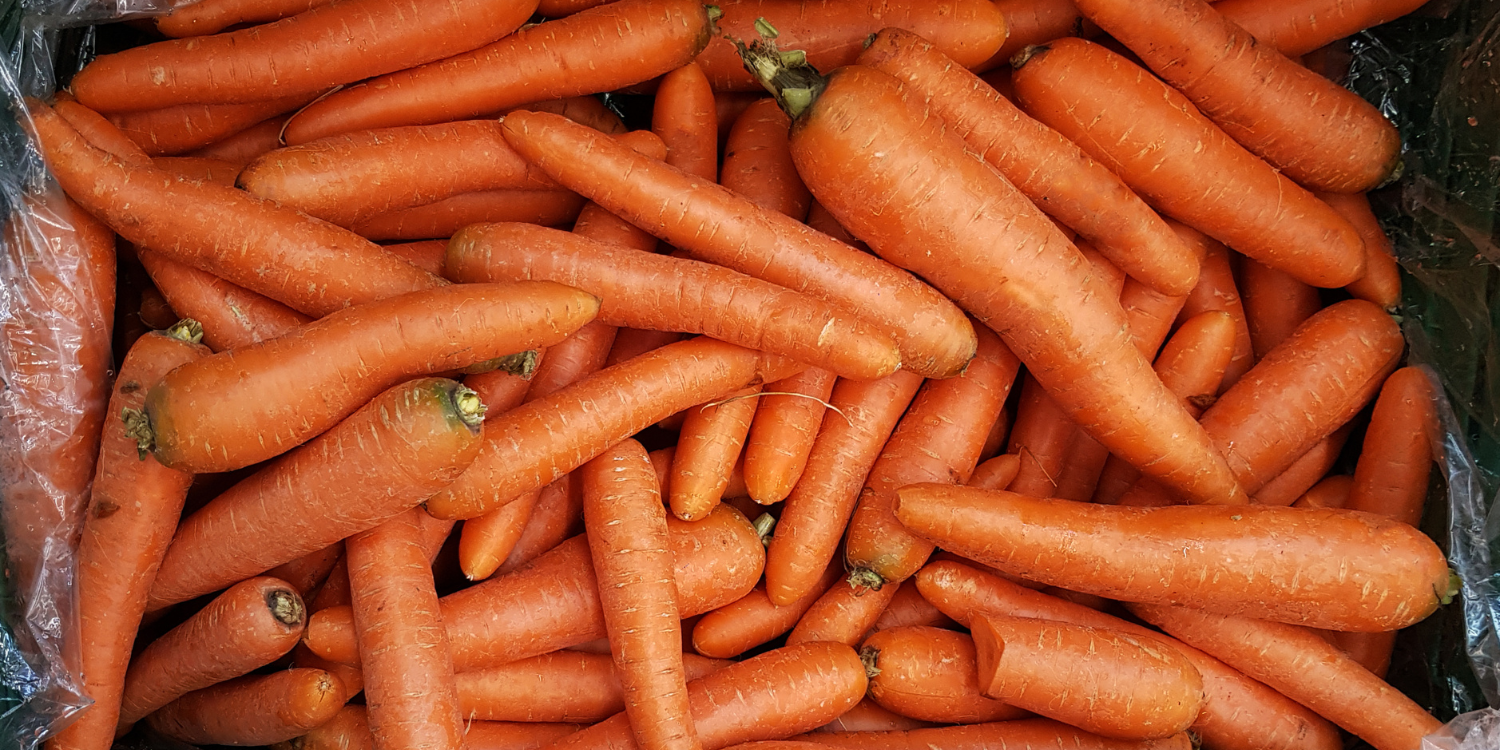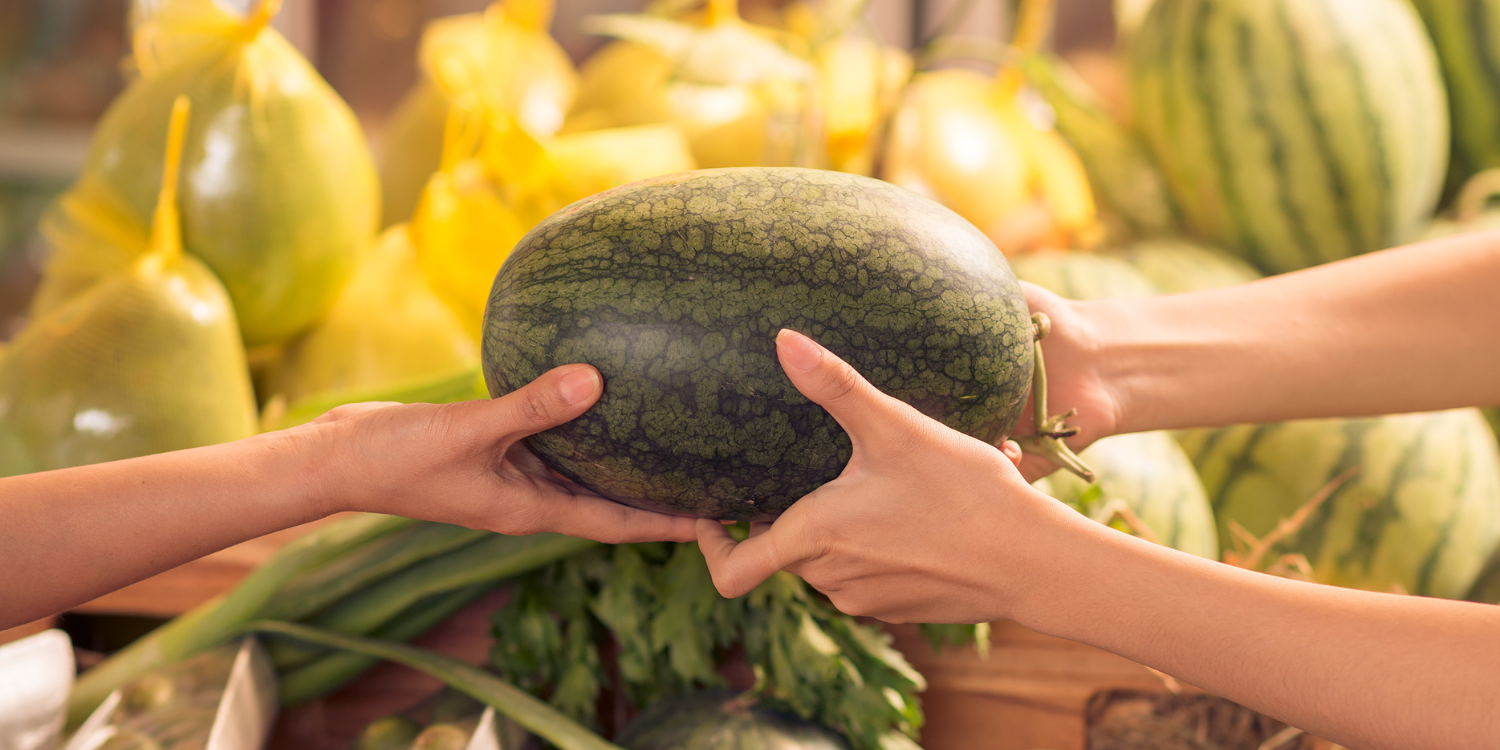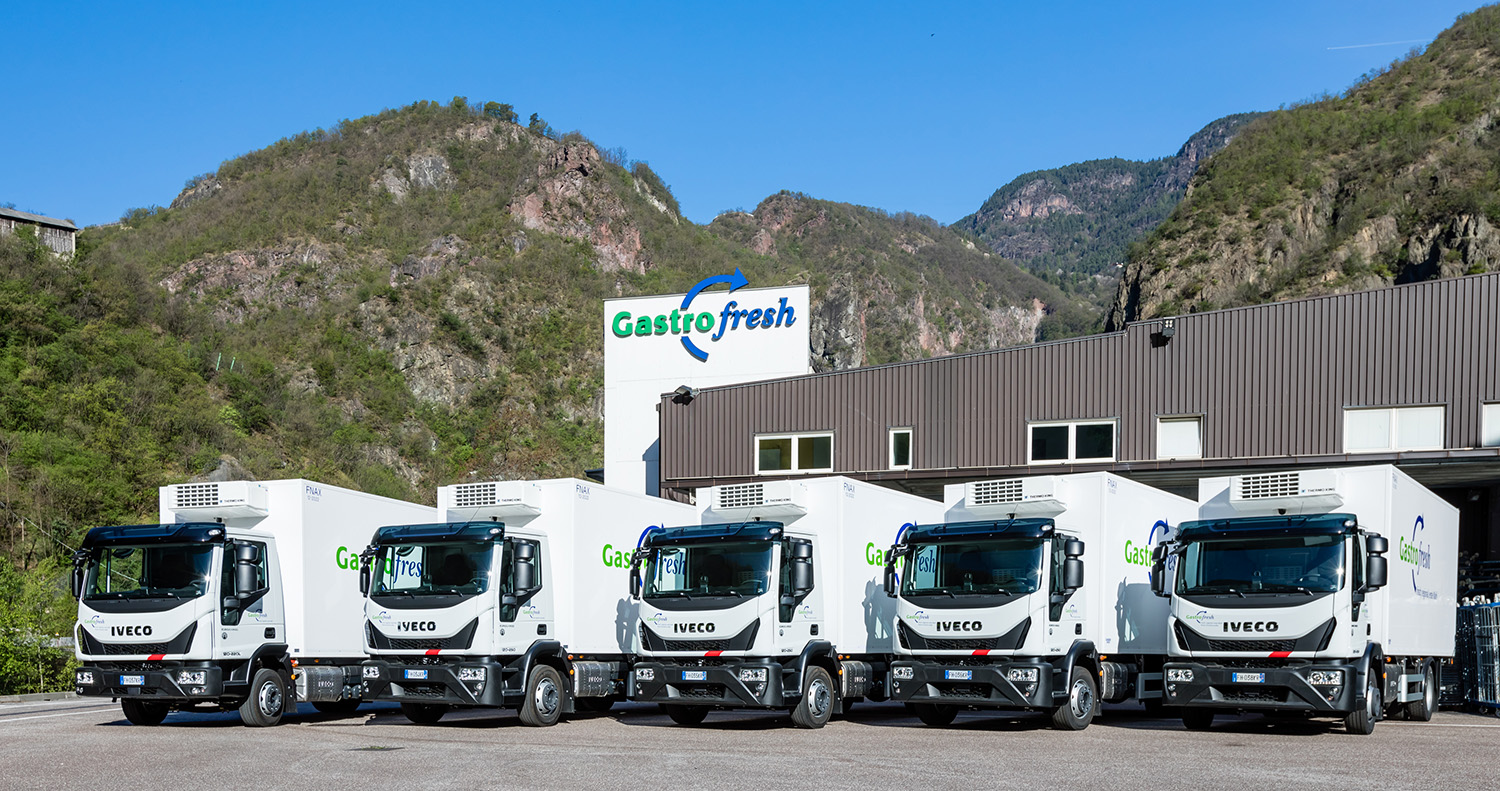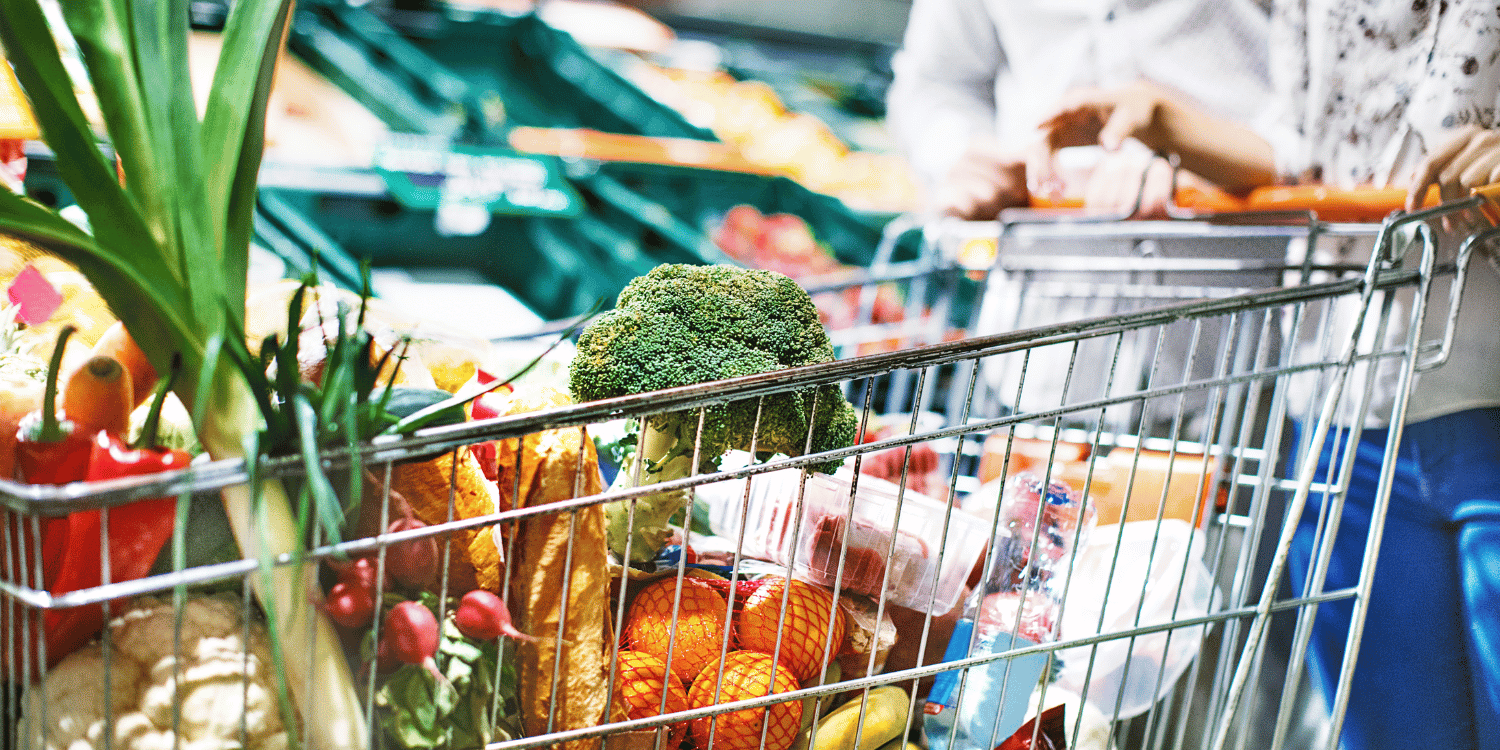In recent years, there has been a noticeable evolution in the world’s commerce sector.
This is particularly evident within the sphere of fresh produce.
Understanding these shifts is not only beneficial but crucial in the competitive business landscape.
With constant fluctuation of market patterns, industry players are perpetually challenged to adapt and remain relevant.
This demands an in-depth perusal of the current trade trends and prospective future patterns.
Herein, we unpack noteworthy developments and ultimately dig in into the implications derived from this unfolding narrative.
- The demand for organic fruits and vegetables is growing.
- Food safety standards are becoming more stringent.
- Consumers are showing higher awareness of health and nutrition.
- Cold chain logistics benefit from technological advancements.
- Interest in exotic Asian fruits is increasing.
As we talk more about the dynamics of global trade trends in fresh produce, we will expand into more specific areas worth exploring.
This includes understanding key players in the market, their strategies, and how they influence trade patterns.
You will also gain beneficial insights into the effect of climate change on the global trade of fresh produce.
Stay with us as we navigate through these crucial aspects which shape the current and future landscape of this ever-evolving industry.
Contents
- Global Trade Trends In Fresh Produce
- 1. Rising Demand for Organic Fruits and Vegetables
- 2. Increased emphasis on food safety standards
- 3. Greater consumer awareness about health and nutrition
- 4. Technological advancements in cold chain logistics
- 5. Growing Interest in Exotic Fruits from Asia
- 6. High Growth in Online Fresh Produce Retail
- 7. Influx of Private Labels in Fresh Produce Market
- 8. Development of sustainable packaging solutions
- 9. Increased Implementation of Traceability in Supply Chain
- 10. Shift toward Locally Sourced and Grown Produce
- The Bottom Line
Global Trade Trends In Fresh Produce
1. Rising Demand for Organic Fruits and Vegetables
In Short: The agricultural sector is experiencing a massive surge in demand for organic fruits and vegetables, driven by a growing consumer awareness of their health benefits and environmental impact. The trend presents challenges, including balancing higher production costs with the necessity to keep organic produce affordable, but is expected to continue globally due to increased disposable income and rising health consciousness.
The agricultural sector has been witnessing a revolution of sorts in recent years with an exponential increase in the demand for organic fruits and vegetables.
This surge in demand has been primarily cardinalized by growing consumer awareness about the health benefits of consuming organic produce and a concerted shift towards healthier lifestyles.
Today’s consumers are not just focused on the taste or price of their food, but are also keenly interested in how it is produced, where it’s grown, and the impact of its production on the environment.
They are willing to pay a premium for organic produce, knowing that it’s not just a healthier choice for themselves and their families, but also a way to support local, sustainable farming practices.
There are several reasons that have spurred this high demand for organic produce, which I’ll outline below:
- Greater nutritional value: Organic fruits and vegetables are believed to have higher nutritional content compared to conventionally grown produce because they are farmed in a manner that is kinder to the soil, resulting in produce with higher concentrations of nutrients.
- Avoidance of synthetic pesticides and fertilizers: Organic farming prohibits the use of synthetic pesticides and fertilizers, which not only makes the produce healthier but also decreases contamination of the environment.
- GMO-free: Organic produce is also non-GMO (Genetically Modified Organism), which is a major selling point for health-conscious consumer demographics.
It’s also significant to note that this rising demand for organic fruits and vegetables isn’t limited to the developed nations, but is a global phenomenon.
Development in regions such as Asia-Pacific and Latin America is advancing at a particularly robust pace due to growing middle classes with increased disposable income and rising health awareness.
This paradigm shift has had a significant impact on the global fresh produce trade, with organic produce gradually carving out a larger chunk of the market share.
However, meeting this growing demand is not without its challenges.
For one, organic farming practices can be more labor-intensive and costly, leading to higher retail prices for organic produce compared to conventionally grown counterparts.
Also, there’s still a significant proportion of consumers who love the idea of organic food but are put off by the high prices.
Pro Tip: To capitalize on growing market trends, consider investing in organic farming as consumer demand for healthier, environmentally-friendly, and sustainably-sourced produce is on the rise globally.
Thus, finding a balance between keeping organic produce affordable and ensuring sustainable and fair returns for farmers remains a crucial challenge confronting the organic produce industry.
But these obstacles aside, the increasing demand for organic fruits and vegetables is a trend expected to remain ascendant in the global fresh produce trade and shows no signs of abating anytime soon.
2. Increased emphasis on food safety standards
In Short: Food safety standards have become crucial in global fresh produce trade, with increasing demands from consumers and regulatory bodies for adherence to high-quality safety measures. Key food safety standards include Good Agricultural Practice (GAP), Hazard Analysis Critical Control Point (HACCP), ISO 22000, and Safe Quality Food (SQF), all of which work towards safe, quality, and eco-friendly produce, further building consumer trust and enhancing market stability.
As global trade in fresh produce continues its upward trajectory, food safety standards have accordingly taken a front seat. Food safety is no longer a back-burner issue.
Moreover, it has become a pertinent driving factor in fresh produce trade dynamics. In essence, both consumers and regulatory bodies increasingly demand adherence to high-quality safety standards.
Countries involved in exporting and importing fresh produce are tightening their regulations, not just to ensure the safety of their public but also to install trust in the international marketplace. This can further lead to the creation of a more stable and predictable trade environment.
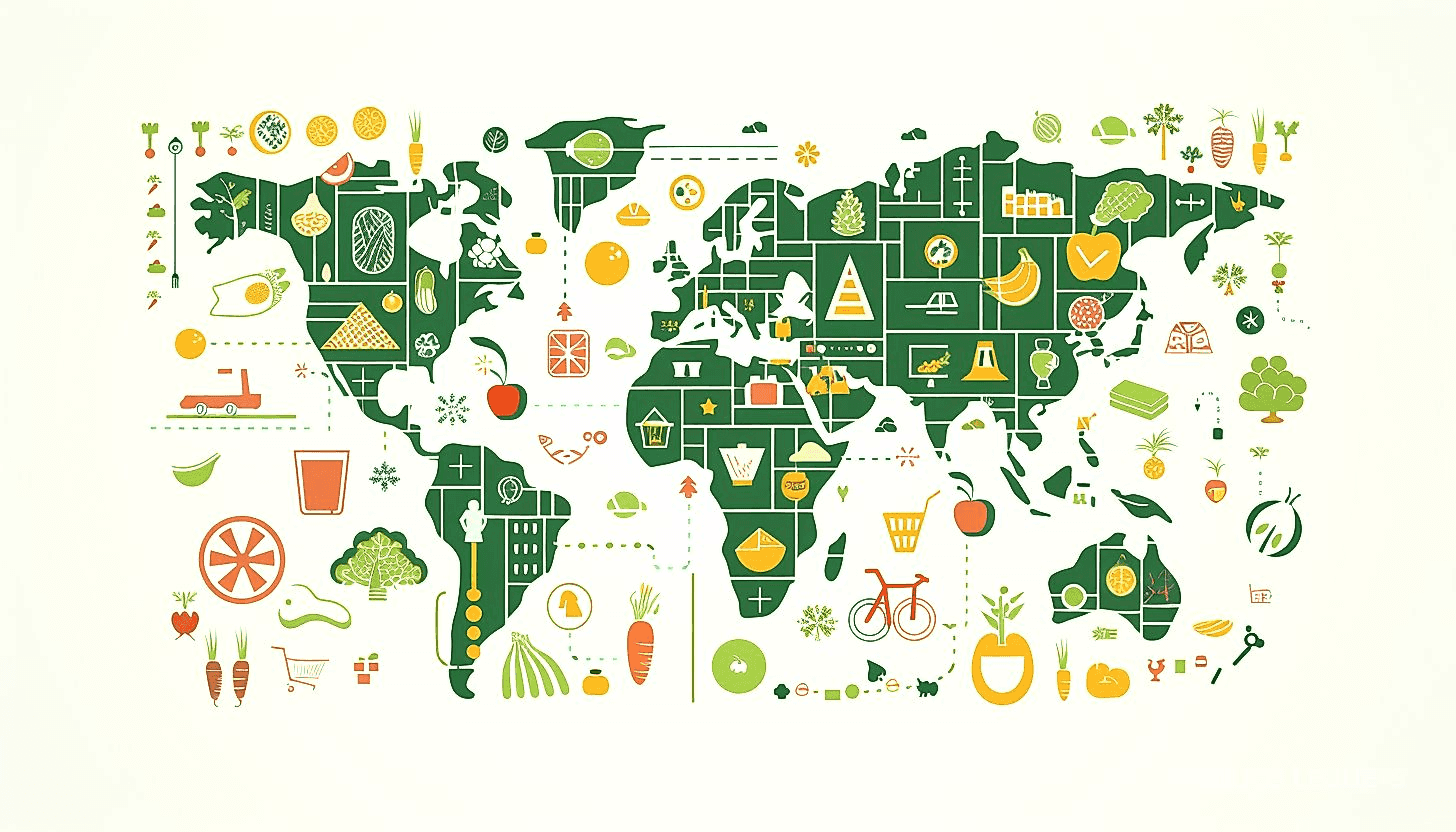
Producers worldwide now have to comply with an array of food safety standards if they wish to access major markets. These include diverse set of regulations, food quality checks and track-and-trace capabilities, among others.
Let us look at some of the key food safety standards that are shaping the global fresh produce trade.
- GAP (Good Agricultural Practice): Governments and industry bodies have implemented GAP to ensure the production of healthy, high-quality food while reducing potential environmental harm.
- HACCP (Hazard Analysis Critical Control Point): A systematic preventive approach to food safety that addresses physical, chemical and biological hazards as a means of prevention rather than finished product inspection.
- ISO 22000: This standard sets out the requirements for a food safety management system and can be certified. It maps out what an organization needs to demonstrate its ability to control food safety hazards in order to ensure that food is safe.
- SQF (Safe Quality Food): A rigorous and credible food safety management system, recognized by the Global Food Safety Initiative (GFSI).
Global fresh produce trading companies are investing significant amounts of capital in implementing these safety standards.
It is becoming a norm for consumers to check for certified safety labels such as ‘Organic’, ‘GMO-Free’, etc. before purchasing fresh produce.
This additional emphasis on food safety may seem burdensome to some farmers and producers, but many are appreciating this as a chance to set themselves apart from competitors and add value to their produce.
Furthermore, achieving better food safety isn’t merely about better inspection and punishment for violations.
In the end, it is about identifying and preventing risks within the food’s supply chain from farm to table, ensuring that every step—planting, harvesting, sorting, packing, shipping—is taken with safety in mind, protecting the wellness of consumers and the reputation of the produce industry.
Therefore, these advancements indicate that the global produce industry finds itself in a phase of re-evaluation and reformation.
The industry is slowly shifting from being simply ‘output-oriented’ to focusing on a multitude of factors such as safety, quality, and eco-friendliness.
3. Greater consumer awareness about health and nutrition
In Short: Heightened consumer awareness about health and nutrition is shaping the fresh produce market as people strive to understand their food’s nutritional content and health potential. Digitalization, the growth of health influencers, interest in organic and non-GMO foods, and emphasis on local sourcing and sustainable packaging, are key elements of this new customer driven era.
One of the prevalent aspects dominating the global trade market in fresh produce is the burgeoning consumer awareness about health and nutrition.
This attractive trend is sculpting the contours of the industry by encouraging a shift towards healthier diets.
More than ever, people are earnestly seeking to understand what they consume, what it contains, its nutritional value and its potential impact on their health.
There is a clear surge in attitudes leaning towards fruits and vegetables as people appreciate their role in bolstering immunity, slowing aging, and averting diseases.
The exponential growth of health and wellness blogs, podcasts, fitness influencers and nutrition coaches underscores the growing interest in healthier lifestyles.
Rapid digitalization has also granted consumers unprecedented access to valuable nutrition and health-related information right at their fingertips.
This easy accessibility to information is fortifying the drive for healthier food choices and considerable spotlight on fresh produce.
Beyond basic nutrition, consumers are reaching out for produce that provides additional health benefits such as organic and non-GM foods.
These have received considerable accolades for their absence of synthetic pesticides, artificial radiations, bio-engineered genes and other health-compromising factors.
The following list provides a snapshot of specific areas being explored by health-conscious consumers.
- Organic fruits & vegetables
- Locally sourced and grown
- Sustainable packaging
- Non-GM foods
The rising trend of organic produce hints at consumers who are savvy about their health and also environmentally conscious.
Equally important is the tilt towards locally sourced and grown produce being perceived as fresher and more nutritious.
Consumers are showing immense interest in understanding the source of their produce and the journey it makes to their table.
Equipped with this knowledge, they are favoring local producers and farmers’ markets that offer a certain degree of traceability.
Similarly, sustainable packaging is increasingly appealing to consumers as it aligns with their values of reducing pollution and over-exploitation of resources.
At the end of the day, the era of passive consumers is rapidly fading as a more conscious and informed group takes charge.
4. Technological advancements in cold chain logistics
In Short: Technological advancements in cold chain logistics, such as IoT sensors, AI/ML algorithms, and Blockchain technology, are increasing efficiency and reducing food wastage in the global fresh produce trade. These tools allow for real-time environment monitoring, data analysis, improved transparency, and better planning, promising a sustainable and efficient future for the industry.
As part of the global trade trends in fresh produce, it is imperative to dig in into the technological advancements that are currently improving cold chain logistics.
The cold chain logistics field, which is integral to the success of fresh produce trade, has seen remarkable advancements in recent years.
The rapid evolution of technology has allowed new solutions to flourish, enhancing the efficiency and effectiveness of maintaining the freshness of fruits and vegetables during transport.

Specifically, technology has opened doors to real-time monitoring of the temperature and humidity levels within shipping containers, drastically reducing the cases of spoilage, thereby extending the lifespan of fresh produce.
Such technological innovations are not only beneficial to the bottom line of businesses but are also playing a critical role in reducing food wastage globally.
One major area where technology has made a significant impact is in the realm of data capture and analysis.
Modern telemetry systems connected with sophisticated software platforms can record a plethora of data points related to temperature, humidity, location, and even light exposure during the journey of the fresh produce from farm to consumer.
Nowadays, let’s consider the following significant advancements that have revolutionized this field.
- Internet of Things (IoT): With the aid of IoT sensors, real-time data about environmental conditions can be captured and transmitted wirelessly to a central system, enabling prompt decision-making.
- Artificial Intelligence (AI) and Machine Learning (ML): AI/ML algorithms can analyze collected data to forecast potential issues in maintaining the optimal cold chain conditions and suggest possible corrective measures.
- Blockchain technology:This technology ensures the traceability and transparency of the cold chain, thereby reducing chances of fraud and enhancing consumer trust.
These significant advancements are making a huge difference in the way cold chain logistics operates, paving the way for a more sustainable, efficient, and trustworthy fresh produce trade.
New software solutions also allow for improved planning and routing, optimizing the shipping process and minimizing unnecessary costs and energy use.
Technological advances in cold chain logistics are expected to continue at a rapid pace.
As a result, we can look forward to more innovative solutions that will facilitate and improve the global trade of fresh produce in the near future.
Important: Technological advancements in cold chain logistics, such as Internet of Things (IoT) sensors for real-time data capture and AI/Machine Learning algorithms for data analysis, are boosting the efficiency and effectiveness of fresh produce trade, reducing food wastage, and fostering a more sustainable and efficient global trade network.
Clearly, technological progress is not just making our lives easier but also helping us move towards a sustainable and efficient global trade network for fresh produce.
In today’s era of increasing connectivity and rapid data transmission, the integration of these technologies is becoming easier and more accessible, portending a promising future for the global trade of fresh produce.
5. Growing Interest in Exotic Fruits from Asia
In Short: Global consumers’ growing interest in Asian exotic fruits such as Dragon fruit, Durian, Lychee, and Rambutan, is driven by the taste adventure they offer and their associated health benefits. Despite logistical and quality assurance challenges, the market continues to thrive, boosted by the Asian diaspora’s influence on Western food culture and the rising demand for organic produce.
In the ever-evolving domain of fresh produce trade, a significant trend gaining momentum is the growing interest in exotic fruits from Asia.
The global marketplace is observing an increased appetite for new and interesting flavors, the quest for which often leads consumers to Asian produce.
From the vibrant Dragon fruit to the uniquely flavoured Durian, to the tiny but potent Lychee, and the sweet-sour taste of the Rambutan, Asian fruits offer a palatable adventure that intrigues the global consumer.
This rising demand is a reflection of the global consumer’s open-mindedness to exploring new cultural cuisines, and their increasing interest in the health benefits associated with these exotic fruits.
Asian fresh produce is renowned for its high nutritional values, and there has been significant research supporting the health benefits linked with these fruits.
For instance, some of these fruits are rich in antioxidants, have anti-inflammatory properties, boost immunity, and promote skin and cardiovascular health.
Undeniably, these are appealing factors to today’s health-conscious consumers.
Let’s take a closer look at some of these intriguing Asian fruits and their known health benefits:
- Dragon Fruit: rich in antioxidants, helps regulate sugar levels and promotes gut health.
- Durian: packed with nutrients, aids digestion and promotes good bone health.
- Lychee: great source of vitamins C and B6, supports the immune system and promotes cardiovascular health.
- Rambutan: rich in fiber, iron, and vitamin C, aids digestion, and promotes skin health.
Moreover, the rise of the Asian population in various Western countries has been a driving force in bringing these exotic fruits to the foreign markets.
This diaspora population bring with them their cultural culinary preferences, leading importers and retailers to stock these exotic fruits to cater to this demographic.
There has also been a surge in demand for organic and pesticide-free fresh produce, and several Asian farmers adhere to natural farming practices, thus feeding this market demand.
However, it is important to note that importing fresh produce poses its own set of challenges.
Pro Tip: Explore Asian fruits like Dragon Fruit, Durian, Lychee, and Rambutan, given the growing demand, their rich nutritional values and health benefits such as high antioxidant content, promoting gut health, and boosting immunity.
Industry players need to address issues related to logistics, cold chain infrastructure, food safety, and quality assurance to meet global trade standards.
Despite these challenges, the opportunities presented by this growing interest in Asian exotic fruits are immense and projections suggest this trend will continue to gather steam in the foreseeable future.
6. High Growth in Online Fresh Produce Retail
In Short: The demand for online shopping has driven significant growth in internet fresh produce retail, from both conventional grocery chains and specialized startups. Factors such as convenience, accessibility, a variety of global produce, and pandemic safety concerns contribute to this rise, aided by advanced technologies and reliable delivery infrastructures.
The increasing demand for online shopping has led to a significant growth in fresh produce retail on the internet.
This growth resides not just within conventional grocery chains venturing into the digital realm, but also with specialized startup companies explicitly established for the online sale of fresh fruits and vegetables.
Such growth is a direct consequence of various factors such as convenience, accessibility, and the ongoing pandemic.
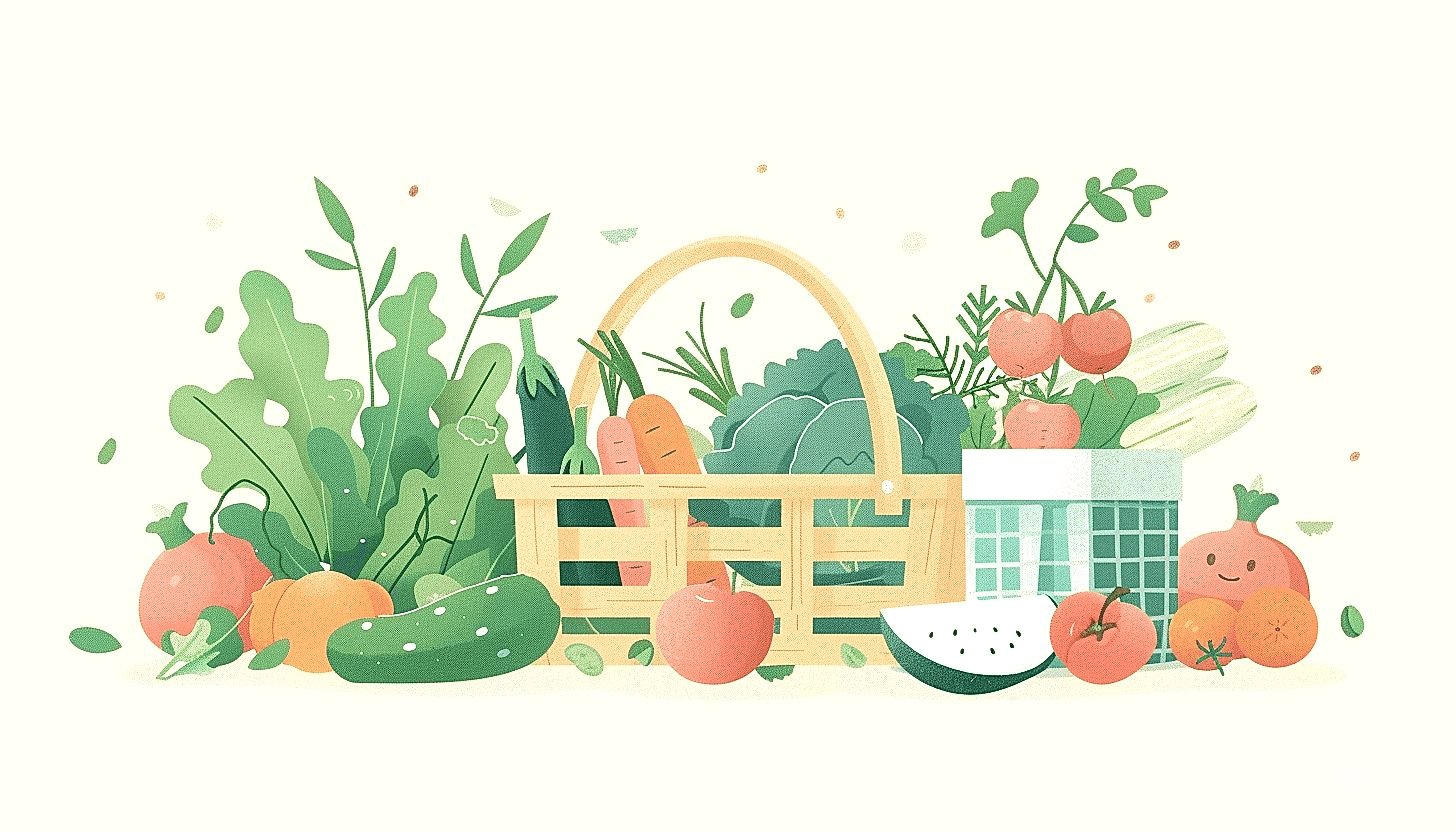
Today’s busy lifestyles often result in consumers having less time to visit physical stores, making the quick and easy nature of online shopping for fresh produce extremely appealing.
Moreover, with the click of a button, consumers can now access a wide variety of fruits and vegetables, locally and globally, that might not be readily available in their local supermarkets.
Given the impact of COVID-19, online fresh produce retail has seen a significant surge as more people are inclined to shop from the comfort of their homes to limit exposure.
It is also worth noting the essential role technology plays in this rapid growth.
Advanced algorithms, filters, and user-customized notifications make the shopping experience more streamlined and customer-friendly.
Furthermore, reliable delivery infrastructures ensure fast, efficient, and safe delivery of fresh produce straight to the consumer’s doorstep.
Considering these benefits, let’s discuss the main reasons why consumers are shifting towards the online retail of fresh produce.
- Convenience: Online shopping saves significant time and effort by eliminating the need for a physical grocery store visit.
- Variety: Consumers gain access to a more extensive range of fruits and vegetables from different regions without geographical constraints.
- Safety: Amidst pandemic concerns, online shopping provides a safer alternative to crowded supermarket aisles.
- Tech Adaptability: Advanced technologies facilitate seamless navigation and hassle-free shopping experience.
The rise in online fresh produce retail is also propelling innovations and opportunities in agricultural practices, cold chain logistics, and sustainable packaging solutions.
Furthermore, there has been an increased focus on traceability in supply-chain operations to ensure quality control, provenance verification, and waste reduction.
Another trend is the inclusion of more organic and exotic produce in online offerings, catering to an increasingly health-conscious and culinary adventurous consumer base.
While online fresh produce retail continues to grow and evolve, it is important to acknowledge and address concerns such as wasteful packaging, carbon emissions from delivery vehicles, and potential impacts on traditional markets and small-scale farmers.
In this context, the ultimate goal is to strike a balance between convenience and sustainability, ensuring that this online growth does not compromise our environment or social equity.
7. Influx of Private Labels in Fresh Produce Market
In Short: Private labels, with competitive pricing and quality assurance, are gaining substantial market share in the global fresh produce trade. This development is fostering innovation, impacting sustainability practices, and driving a significant shift in consumer loyalty towards these brands.
In recent years, the global trade trends in fresh produce have showcased an interesting development – the significant influx of private labels in the market.
Private labels, also known as store brands or own brands, are gaining a substantial foothold in the fresh produce market, driving the competition stiffer than ever before.
Highly competitive pricing, unique product offering and no compromise on quality are some of the factors behind the consumers’ increasing acceptance of private label products.
Private labels are no longer limited to processed foods or non Perishable items.
On the contrary, supermarkets and hypermarkets are gradually extending their private label offerings into the fresh produce category, including fruits, vegetables, and dairy products among others, to offer a wider range of value driven products to their consumers.
Marketplaces have begun to comprehend the potential of private labels to amplify profit margins, and they are robustly pushing these labels across their platforms.
The trend is not only limited to domestic markets, but many large retailers are also exporting their private label products to other countries in an attempt to reap the benefits of emerging markets.
This market dynamic has a multi-faceted impact on the global fresh produce business, ranging from driving innovation and competition to changing the approach to branding and marketing.
To understand this better, let’s deep dive into some of the key areas where private labels are tremendously influencing the fresh produce market.
- The private labels potentially force innovation on established brands, making them rethink and modify their product strategies.
- They often act as catalysts in driving sustainable practices in the business as they control both the production and distribution process.
- Private labels generally offer a better value proposition to consumers, forcing other players to reconsider their pricing strategies.
In addition, private labels have a positive effect on consumer perception.
They potentially drive consumer loyalty towards retailers, as consumers associate these labels with the retailers.
In fact, the 2018 Nielsen Global Private Label Report pointed out that private labels are growing three times faster than national brands, reflecting a seismic shift in their consumer acceptance.
The growing prominence of private labels in the fresh produce industry has also prompted regulations to ensure quality and safety standards.
While the growing demand for private labels could potentially disrupt the balance in the fresh produce market, it certainly illustrates an intriguing development in global trade trends.
Indeed, the storyline of private labels in the fresh produce market is an evolving one and continues to unfold as we pass through these dynamic times.
8. Development of sustainable packaging solutions
In Short: The rising global concern for environmental sustainability has sparked significant emphasis on the development of sustainable packaging solutions within the fresh produce industry, driven by increasing consumer awareness and demand for greener packaging options. Such developments include the use of biodegradable, minimalistic, and recyclable materials, comparative labeling, and technology integration for optimal resource use, all of which crucially contribute to the reduction of harmful waste and ensuring produce freshness and quality.
With the ever-increasing global concern over environmental sustainability, the development of sustainable packaging solutions within the fresh produce industry has become a significant topic of discussion.
More than ever before, consumers are becoming aware of the environmental impact of their purchasing choices, driving the demand for greener packaging options.
This growing demand is seen across the spectrum in the fresh produce market.
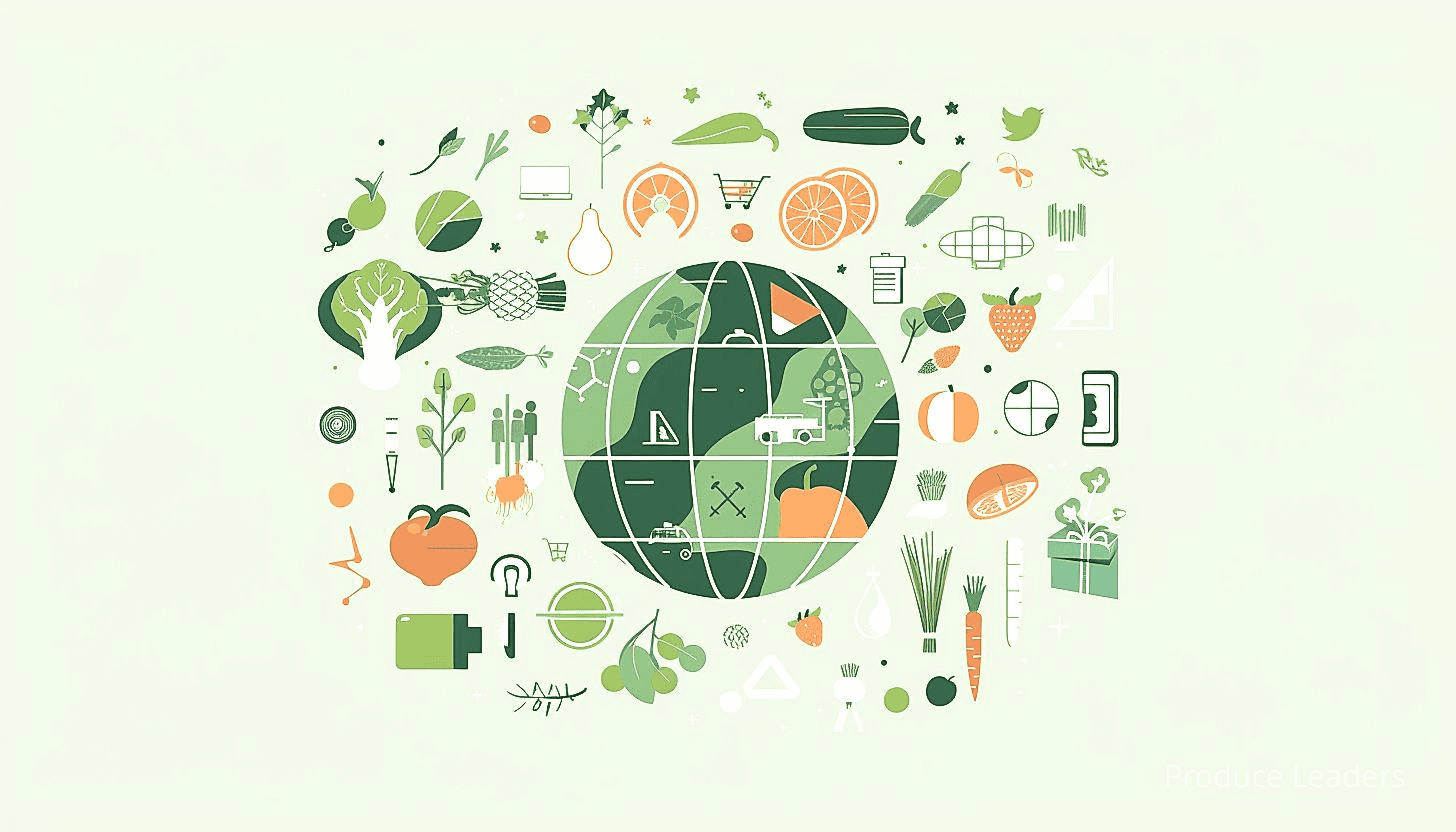
It’s not just a theoretical demand either; our global world is witnessing quite the pragmatic shift towards more environmentally friendly packaging solutions.
Enterprises are increasingly investing in green packaging technology.
Shop-keepers, supermarkets, and even the online fresh produce retail mentioned earlier in this piece are all starting to pay closer attention to their packaging strategies.
The following list presents a few initiatives being implemented to promote the development of sustainable packaging in the fresh produce sector:
- Use of Biodegradable Packaging: Manufacturers are innovating packaging solutions which can decompose naturally without causing harm to the environment.
- Minimal Packaging: Retailers are leaning towards packaging designs that use the least amount of material possible, hence reducing waste.
- Recyclable materials: The use of materials such as glass, metal, or paper, which can be easily and endlessly recycled.
- Comparative Labeling: Highlighting the environmental footprint of their packaging to better inform consumers about their purchases.
These initiatives not only respond to growing consumer awareness about environmental sustainability but also align with an increased emphasis on food safety standards mentioned earlier in the outline.
For instance, biodegradable packaging helps in reducing harmful waste and the negative impact of plastic residues on soil health, which in turn ensures the safety and quality of fresh produce.
Technological advancements are also playing a critical role in the development of sustainable packaging solutions.
In the age of big data and AI, customized packaging models can be developed, ensuring optimal use of resources while reducing waste.
This integration of technology and environmental concern has further propelled the growth in the global fresh produce market.
It is also influencing the high growth mentioned in this article’s online fresh produce retail section.
With better packaging, freshness and quality can be better preserved, impacting the appeal of online distribution channels for fresh produce.
This trend is also noticeable in the influx of private labels in this market.
Private labels are increasingly investing in sustainable packaging to both enhance their ethical appeal and achieve long-term cost-efficiencies.
And lastly, the switch towards locally sourced and grown produce as also mentioned in this article, aligns well with sustainable packaging solutions.
Imported produce may require substantial packaging for transportation over long distances, while locally-grown produce can reduce this need, further promoting the concept of sustainability.
9. Increased Implementation of Traceability in Supply Chain
In Short: Traceability systems in fresh produce supply chains are becoming more dominant, providing tracking from farm to fork while enhancing food safety, integrity, and consumer trust. Despite challenges like cost and lack of standards, the trend towards greater traceability is transforming the industry through technology adoption and consumer awareness.
Within the scope of global fresh produce trade, the concept of traceability is gaining momentum.
As businesses seek to ensure food safety and quality, the need for transparent and traceable supply chains has become a critical factor.
Traceability systems enable tracking of fresh produce from farm to fork, ensuring accountability, facilitating recall procedures, and giving consumers confidence in the quality and safety of what they eat.
This trend aligns with the increasing demand for organic products and the need for robust food safety standards.
Furthermore, these mechanisms allow businesses to preserve the integrity of their brand and maintain consumer trust.
Because of the numerous benefits, there has been a riding tide towards the incorporation of advanced traceability systems in the supply chain of fresh produce.
Technological advancements have been instrumental in the successful implementation of these systems.
The various technologies utilized include RFID tags, barcodes, and blockchain technology, each providing unique capabilities for tracking and tracing fresh produce.
Now, I believe it’s noteworthy to outline the main benefits of increased traceability:
- Food Safety: By tracing the entire journey of a product, companies can quickly identify and isolate any potential source of contamination.
- Fraud Prevention: Traceability reduces cases of product fraud, such as false labeling and counterfeit products.
- Supplier Accountability: It ensures suppliers uphold high-quality standards by closely monitoring their operations.
- Consumer Trust: Consumers tend to trust businesses that can prove the journey of their produce, fostering loyalty.
The increased adoption of these systems isn’t without challenges, including cost, a lack of uniform standards, and privacy concerns.
However, the view that traceability is an industry requisite for maintaining quality and safety standards in fresh produce supply chains is shared by many.
Also, governments worldwide are playing a role in this by enacting policies that encourage or mandate the use of traceability systems in the food industry.
All in all, the role of traceability in modern supply chains goes beyond mere regulatory compliance.
Potentially, it could transform the global fresh produce industry providing greater transparency and fostering trust among consumers and businesses alike.
Indeed, integrating traceability systems can be seen as a sign in the broader trends of technological adoption and consumer awareness in the global fresh produce market.
10. Shift toward Locally Sourced and Grown Produce
In Short: A growing consumer preference for locally sourced produce is seen globally due to benefits such as reduced carbon footprint, economic support to local farmers, and potentially better nutrition. Balancing this shift with the needs of countries reliant on exporting agricultural goods is crucial, as well as making local produce a cost-effective and convenient choice for consumers.
Looking at the global trade trends in fresh produce, an increasing shift toward locally sourced and grown goods has become more evident. The bloom of farmers markets, the popularity of farm-to-table dining, and consumers’ desire to support local economies have all contributed to this movement.
There is an awareness that consuming local produce can benefit the community and the environment in broad-ranging ways. First off, shorter supply chains resulting from local sourcing reduce the carbon footprint associated with the transport of food. Moreover, local farmers can leverage organic or regenerative practices that help protect biodiversity and sustain the health of the soil.
Additionally, consumers perceive that buying local often equates to better taste, higher nutritional value, and freshness. This perception may be driven by the fact that local produce does not endure the long transit times associated with imports, which can lead to nutrient loss. The close connection with the land and the growers contributes to creating a sense of trust and transparency that is hard to establish with imported foods.
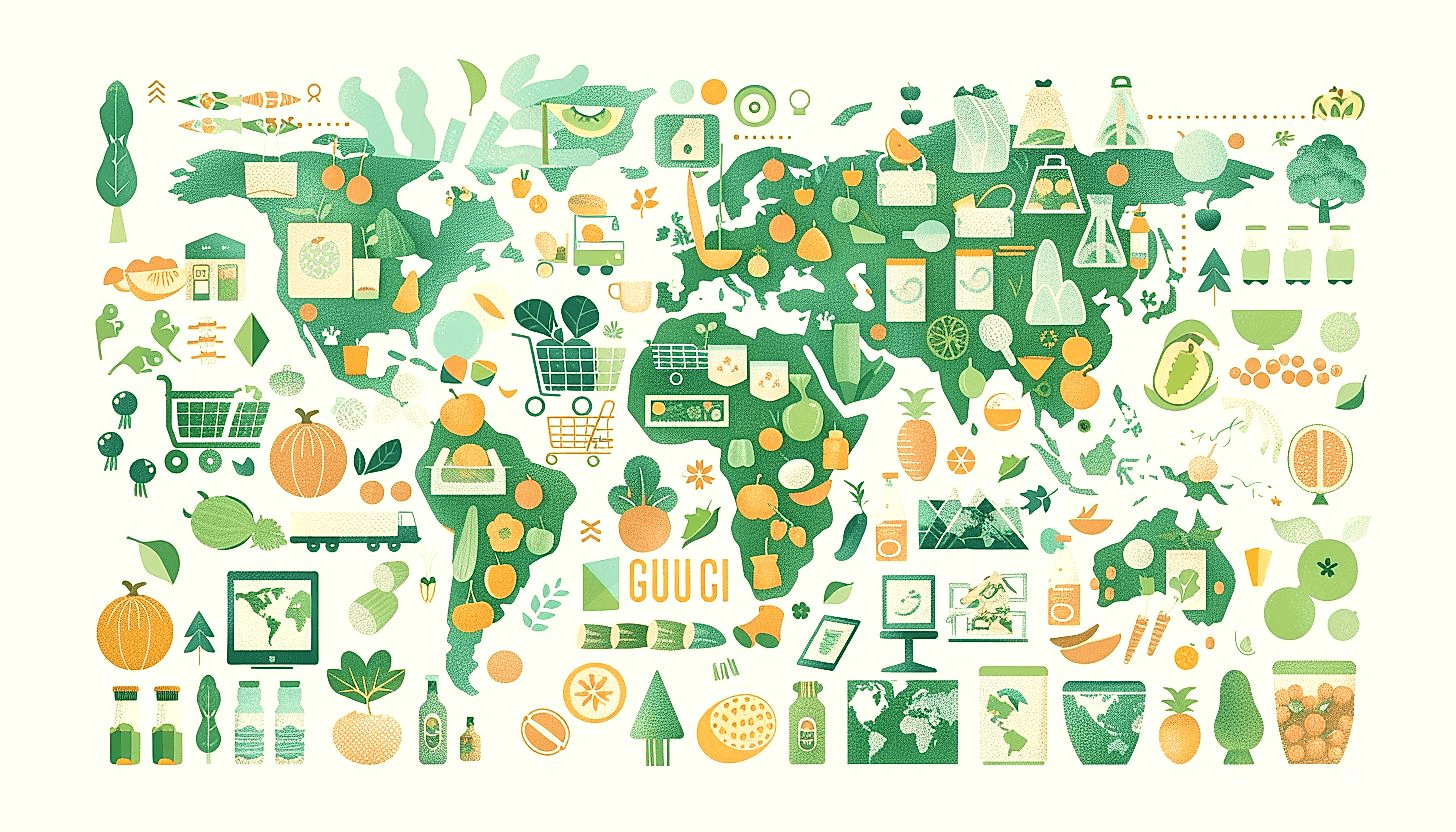
Let’s review some of the benefits of sourcing and consuming produce locally:
- Fresher products as they go through less transit and storage times.
- Support to local economy by investing in local farmers and businesses.
- Lower carbon footprint due to shorter supply chains.
- Potential for better nutritional value as produce is often harvested at its peak.
- Preservation of the local agricultural landscape and biodiversity.
With these benefits in mind, it is no surprise that the popularity of locally grown foods continues to rise. This trend also reflects the global shift towards sustainable consumption, a move driven by increasingly conscious consumers who are as concerned about the environment as they are about their health.
In the global trade of fresh produce, this local shift has important implications. On a positive note, it fosters local economic development and agricultural diversity. However, it might pose challenges for countries heavily reliant on exporting agricultural goods and for consumers located in areas with limited local agricultural production. Therefore, it’s essential to find a balance – supporting local where possible, while ensuring adequate global trade to guarantee access to a wide variety of fresh produce.
Overall, this shift towards locally sourced and grown produce stands at the crossroads between sustainability and community development. It holds the potential to drive the fresh produce industry to evolve in response to consumer’s growing obsession with local. As part of this evolution, there could also be a push for more technological advancements that help farmers grow more efficiently and sustainably, even in smaller, localized operations.
Yet, despite growing interest, simply being ‘local’ isn’t enough to sway all consumers. Price, convenience, and variety will continue to play a role in shaping consumer choices. Therefore, we need to develop ways to make local produce not just an eco-friendly choice but also a convenient and cost-effective one.
The Bottom Line
The global trade landscape in fresh produce is enduring numerous transformations with key trends reshaping the industry. Sustainability initiatives, local sourcing, and advancements in technology are latent forces driving a revolution in global trade frameworks. Health-conscious consumers are key influencers in steering these trends, demanding transparency, quality, and ethical practices within the produce supply chain.
Undoubtedly, the future is pregnant with possibilities, implying a need for producers, distributors, and retailers to adopt innovative approaches, keep abreast with market trends, and align their strategies with consumer preferences and technological advancements. Inevitably, these dynamics within the fresh produce trade are paving the path towards an increasingly globalized, ethical, and technology-driven marketplace.

